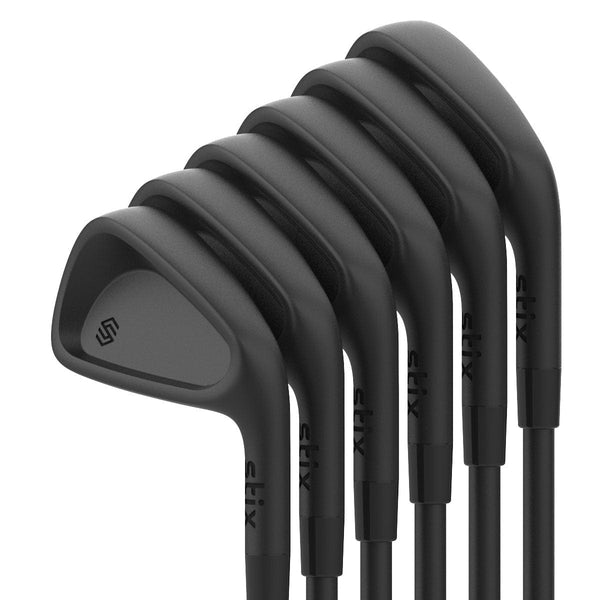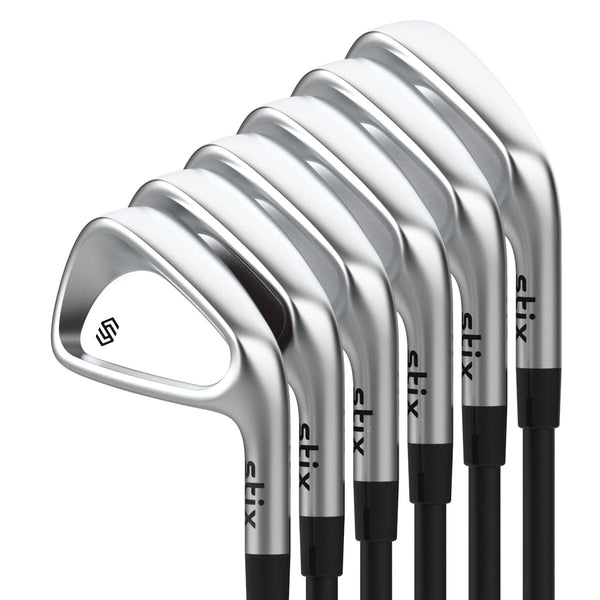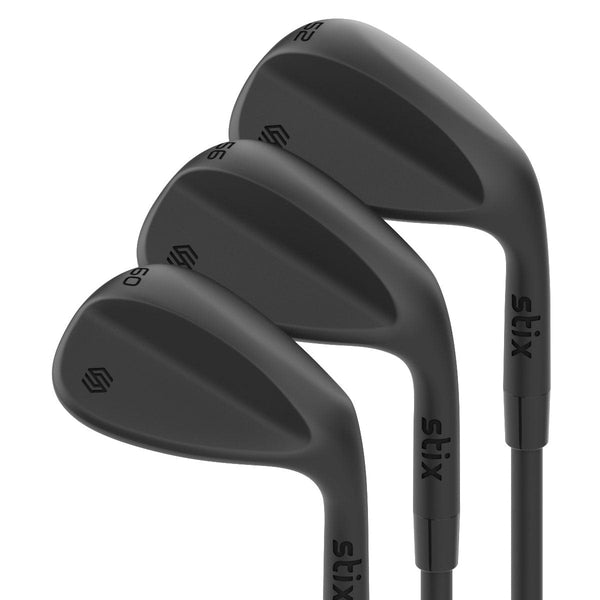It’s no secret that the game of golf is full of unique vocabulary, with most of the specific terms and phrases revolving around different types of golf shots. Although it seems like a lot to learn at first, understanding all these terms and techniques is actually a lot simpler than you think. In this guide, we’ll focus on two intermediate-level golf shots: the chip shot and the pitch shot. You’ll be able to differentiate the two, identify when to use each, and understand the basics of hitting these golf shots in no time.
What is a Chip Shot?
A chip shot is a low-trajectory shot typically played very close to the green, usually within a few yards. The objective of a chip shot is to get the ball onto the green and rolling as soon as possible. Chip shots are played with less wrist action and a more controlled swing. They are ideal when you have a short distance to cover, and the ball has a clear path to the hole with minimal obstacles in between.
How to Hit a Chip Shot
Hitting a chip shot in golf requires a technique that focuses on a controlled and low-trajectory shot. Chipping requires practice to develop consistency and feel. Review the steps below to learn how to hit a chip shot. Afterward, spend time on the practice green, working on different clubs and distances to develop a sense of how the ball reacts after landing.
- Choose the right club: Generally, you'll use a wedge for chip shots, such as a pitching wedge, sand wedge, or even a specialized chipping wedge. Some players even use a 9 or 8-iron. The choice depends on the distance to the hole and the amount of roll you want.
Learn more: What Wedges Should a Beginner Golfer Carry?
- Stand close to the ball: Position your feet closer together than your normal stance. This helps create a more compact and controlled swing. Place the ball slightly back in your stance, closer to your back foot. This promotes a downward strike on the ball.
- Weight distribution: Shift most of your weight onto your front foot (left foot for right-handed players, and vice versa for left-handed players). This helps ensure a descending strike and promotes clean contact with the ball.
- Keep your wrists firm: Unlike a full swing, you want minimal wrist movement in a chip shot. Maintain a firm wrist position throughout the swing.
- Minimal backswing: Use a short backswing, where your hands and the clubhead move back only a few inches. The length of the backswing will determine the distance the ball travels.
- Controlled acceleration: On the downswing, maintain a smooth and controlled acceleration. The power for the shot comes from your body rotation and the movement of your arms and shoulders.
- Maintain a downward strike: Focus on striking down on the ball with a slight descending blow. This helps create a clean contact and prevents the ball from popping up too much.
- Keep the club low: After impact, ensure that the clubhead stays low to the ground. This will help achieve the desired low trajectory.
- Minimal release: Unlike a full swing, don't release the club aggressively through the ball. Keep your hands ahead of the clubhead through impact to avoid scooping the ball.
- Finish with stability: Maintain your balance and hold your finish position until the ball comes to a stop. Your weight should be mostly on your front foot.
When to Hit a Chip Shot
When executed strategically, a chip shot can save you a stroke or two on the course. Here are some situations where a chip shot is ideal.
Short Distance to the Green
When you're just a few yards away from the green, a chip shot is a great option. It allows you to keep the ball low and controlled, with the goal of getting it onto the green and rolling like a putt.
Downhill Lies
When your ball is sitting on a downhill lie near the green, it can be difficult to control the trajectory and spin of the ball with a pitch shot. Using a chip shot allows you to maintain better control over the shot's distance and direction.
No Major Obstacles
If there are no significant obstacles like bunkers or rough between your ball and the hole, a chip shot can be effective. Since you don't need to clear any obstacles, you can focus on landing the ball on the green and letting it roll toward the hole. These are sometimes called bump-and-run shots.
A bump-and-run shot is a type of chip shot that is played with a lower lofted club and is designed to run along the ground for a significant portion of the shot. This shot is ideal when there's a clear path to the hole, and you want to utilize the ground to your advantage.
What is a Pitch Shot?
A pitch shot is a higher-trajectory shot that's used when you need to carry the ball over an obstacle like rough, a bunker, or a mound before it reaches the green. They're used when you need the ball to stop relatively quickly upon landing. Pitch shots are played with more wrist action and a more open clubface to increase loft.
How to Hit a Pitch Shot
Pitch shots can be highly effective for stopping the ball quickly, especially when there are obstacles to carry or you need to land the ball softly on the green. But these shots also require practice to develop the right touch and feel. Follow the steps below to learn how to hit a pitch shot.
Once you’ve got the motion down, spend time on the practice green working on different distances and club selections. Experiment with different degrees of wrist hinge and swing lengths to control the trajectory and distance of your pitch shots.
- Choose the right club: Select a higher-lofted wedge for pitch shots, such as a sand wedge, lob wedge, or gap wedge. The loft of the club will help you generate the necessary height.
- Open clubface: At address, open the clubface slightly by pointing it slightly to the right (for right-handed players) or left (for left-handed players). This adds loft to the club, facilitating a higher trajectory.
- Weight distribution: Shift your weight slightly onto your front foot, but maintain more balance between your feet compared to a chip shot. This will help you create a shallower angle of attack.
- Wrist hinge: During your backswing, allow your wrists to hinge naturally, creating a higher angle between the clubshaft and your left arm (for right-handed players). This wrist hinge generates the necessary clubhead speed and loft.
- Controlled backswing: Take the club back with a controlled motion, allowing your body to rotate and your arms to swing. Avoid excessive wrist movement at this point.
Learn more: Golf Alignment & Aiming: Beginner Golfers Guide
- Transition: As you begin the downswing, shift your weight back onto your front foot. This helps create a descending strike and crisp contact with the ball.
- Descending blow: Focus on striking down on the ball with the front edge of the club's sole. This downward strike imparts backspin on the ball, helping it stop more quickly upon landing.
- Firm wrists: Maintain a firm wrist position through impact to ensure a clean and solid strike. Avoid flipping your wrists too early, as this can lead to inconsistent contact.
- High, full finish: Allow your hands and the clubhead to pass your body after impact. Your wrists will naturally release as the clubhead swings through the ball. Unlike a chip shot, your finish position in a pitch shot will have your hands higher and the clubhead pointing more skyward. This indicates that you've generated a higher trajectory.
When to Hit a Pitch Shot
Pitch shots are particularly useful in situations where you need to hit a higher-trajectory shot to clear obstacles, stop the ball quickly upon landing, and control the distance more precisely. Here are some common scenarios where you would want to hit a pitch shot.
Obstacles to Carry
When there are bunkers, water hazards, or other obstacles between your ball and the green, a pitch shot is ideal. The higher trajectory allows you to clear these obstacles and land the ball safely on the green.
Flagstick Close to the Edge
If the hole is cut close to the edge of the green, using a pitch shot can help you control the landing and stop the ball quickly. This minimizes the risk of overshooting the hole and ending up in a difficult position.
Tight Pin Placement
If the hole is located behind a bunker or other hazard, and there's limited space between the hazard and the hole, a pitch shot allows you to drop the ball softly onto the green and minimize the risk of overshooting the target.
Situations Requiring Precision
Pitch shots offer a higher level of precision when it comes to controlling distance and spin. If you're aiming to get the ball close to the hole for a potential birdie or par putt, a pitch shot provides more control than a chip shot.
Chip vs. Pitch Shot
In summary, chip shots are low-trajectory shots played close to the green when you want the ball to land and roll, while pitch shots are higher-trajectory shots used to clear obstacles and land the ball softly on the green. Choosing between a chip and a pitch shot depends on factors like the distance to the hole, the obstacles in the way, and the desired outcome for the shot.
The key characteristics of a chip shot are:
- Low trajectory: The ball stays close to the ground, minimizing the potential for air time.
- Less wrist movement: The hands remain relatively still, and the shot relies more on the arms and shoulders.
- Roll: The ball lands on the green and rolls like a putt.
- Club choice: Players often use clubs like wedges (such as a pitching wedge or sand wedge) for chip shots due to their loft and control.
The key characteristics of a pitch shot are:
- Higher trajectory: The ball goes up into the air more compared to a chip shot.
- More wrist hinge: There's more wrist movement involved in the swing, allowing for increased loft.
- Soft landing: The ball lands with a steeper angle and tends to stop quicker after hitting the green.
- Use of higher-lofted clubs: Pitch shots are often played with clubs like lob wedges or gap wedges due to their higher loft, which helps generate the required height.
Practice Makes Perfect
Learning how to hit pitch and chip shots takes practice. Once you’ve got the technique down, you’ll be dropping strokes like no tomorrow. Aside from regular practice, a set of forgiving golf clubs can make mastering these shots a piece of cake. A set of Stix golf clubs not only looks amazing but has enough forgiveness to help you hit more accurate shots. You won’t be disappointed!
You might also like:
- Golf Draw vs. Fade: What's The Difference? (+Tips)
- What is a Golf Slice? 5 Steps to Improve Ball Flight
- 10 Tips to Dramatically Improve Your Putting Skills






